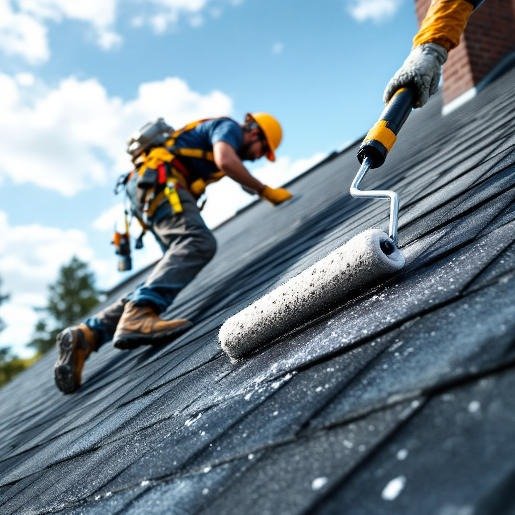Many homeowners overlook painting a shingle house roof, but it can significantly enhance the appearance, energy efficiency, and longevity of their home. If done correctly, painting can refresh the roof’s look, reduce heat absorption, and even extend the life of your shingles. However, it’s not as simple as grabbing a paintbrush and getting started. There are specific steps, materials, and precautions to ensure the job is done correctly.
Why Paint a Shingle House Roof?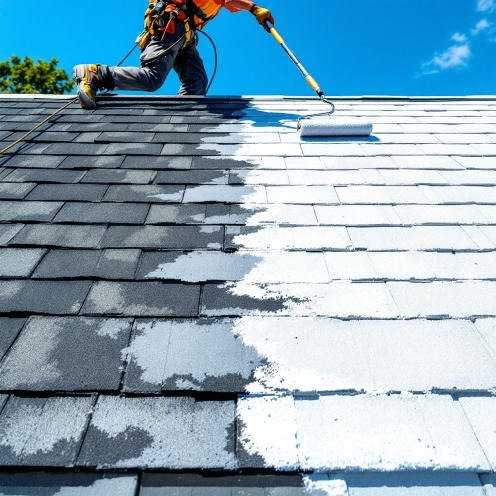
Benefits of Painting Your Roof
Painting your shingle roof has several benefits that go beyond just appearance:
- Enhanced Aesthetic Appeal: A fresh coat of paint can completely transform the look of your house, giving it a polished and updated feel.
- Energy Efficiency: Choosing lighter roof colors can reflect sunlight, keep your home cooler during summer, and reduce energy costs.
- Shingle Preservation: Paint is an additional protective layer, shielding shingles from UV rays, moisture, and wear over time.
Common Misconceptions
It’s a common myth that shingle roofs cannot be painted. While not every shingle type is suitable for painting, asphalt shingles—the most commonly used roofing material—can indeed be painted with the proper preparation and materials. However, following proper steps to avoid issues like peeling or reduced durability is essential.
Understanding Shingle Roofs and Paint Compatibility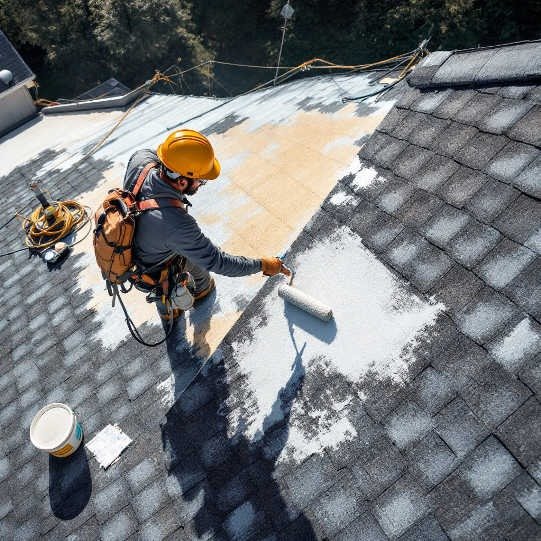
What Are Shingle Roofs?
Shingle roofs are made of small, overlapping material, such as asphalt, wood, slate, or metal. Asphalt shingles are the most popular due to their durability, affordability, and ease of installation. They are also the most compatible with roof painting because they can easily hold paint when properly cleaned and primed.
You may also read (raise your house roof).
Can You Paint a Shingle Roof?
Yes, you can paint a shingle house roof, particularly if it’s made of asphalt shingles. However, the roof must be in good condition, free of significant damages, and adequately prepared. Painting is an excellent alternative to replacement for aesthetic upgrades or minor wear issues, but it’s not a solution for severely damaged roofs.
Pros and Cons of Painting Shingle Roofs
Here’s a quick breakdown of the advantages and disadvantages of painting your roof:
Pros:
- Improved Appearance: Fresh paint can make an old roof look brand new.
- Energy Savings: Light-colored paints can lower roof temperatures, improving energy efficiency.
- Extended Roof Life: Paint can protect shingles from weather elements like sunlight and rain.
Cons:
- Requires Maintenance: Painted roofs can fade and may need touch-ups every 5–7 years.
- Peeling or Cracking: Poor preparation or improper paint can lead to peeling over time.
- Potential Warranty Issues: Some roofing warranties might be voided if shingles are painted.
Preparation: Inspection and Planning
Why Inspection Is Critical
A professional roof inspection is essential before painting. Inspectors will identify leaks, mold, structural damage, or missing shingles. Painting over these problems can worsen them and lead to costly repairs.
What Inspectors Look For:
- Cracked or missing shingles
- Mold or algae growth
- Leaks or water damage
- Structural issues
Deciding Whether to Paint or Replace
If your roof has severe damage, painting may not be a viable option. In such cases, replacing the roof is a better long-term investment. To make an informed decision, consider:
- Age of the Roof: Older roofs (15+ years) may need replacement instead of painting.
- Cost Analysis: Compare the cost of painting versus replacement. Painting is more affordable but may require frequent maintenance.
Planning Your Project
Proper planning ensures a smoother process. Key considerations include:
- Time and Weather: Choose a dry season with mild temperatures, typically spring or fall.
- Materials and Budget: Estimate costs for paint, Primer, and equipment.
- Duration: Painting a roof can take several days, depending on its size and condition.
Safety First: Essential Precautions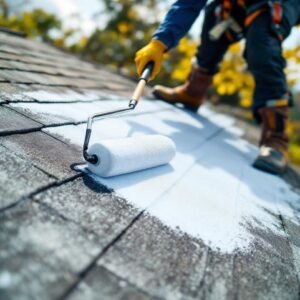
Personal Safety Equipment
Roof painting can be dangerous, so personal safety should always come first. Essential gear includes:
- Harness: Prevents falls while working on sloped surfaces.
- Non-Slip Shoes: Provides traction and stability.
- Gloves and Eye Protection: Protects against chemicals and debris.
- Mask or Respirator: Prevents inhalation of paint fumes.
Site Safety
- Helper or Spotter: Always have someone on the ground to assist if needed.
- Protect Surroundings: Cover landscaping, windows, and other areas with tarps to prevent paint splatter.
Cleaning and Preparing the Roof
Cleaning the Shingles
A clean roof is crucial for proper paint adhesion. Follow these steps:
- Remove Debris: Sweep off leaves, dirt, and other debris.
- Wash the Surface: Use a pressure washer on a low setting to clean the shingles. Avoid high pressure, which can damage them.
- Moss and Algae Removal: Use a mild cleaning solution to eliminate moss and algae buildup.
Allow the roof to dry completely before painting.
Making Minor Repairs
Inspect the roof for minor issues like loose or damaged shingles. Fix these before painting:
- Replace any missing shingles.
- Seal minor cracks or leaks with roofing sealant.
Choosing the Right Materials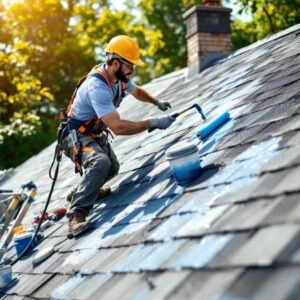
Selecting the Best Primer
A high-quality primer ensures that the paint adheres properly. Look for primers specifically designed for asphalt shingles. Avoid “paint and primer in one” products, as they may not provide the necessary bonding layer.
Picking the Right Paint
Acrylic latex roof paint is the best choice for asphalt shingles. It’s durable, UV-resistant, and flexible, preventing cracking. Avoid elastomeric paints, which can trap moisture and lead to damage.
Color Considerations:
- Light colors reflect sunlight, improving energy efficiency.
- Dark colors enhance aesthetics but may increase heat absorption.
Tools and Equipment
- Paint Sprayer: Ideal for even, quick application.
- Roller or Brush: Useful for detailed areas or edges.
- Other Supplies: Tarps, painter’s tape, and cleaning materials.
ToolProsCons
Paint Sprayer Fast, even coverage Requires practice to use
Roller Easy to control for large areas Slower than a sprayer
Brush Best for edges and small sections Time-consuming
Step-by-Step Guide: How to Paint a Shingle House Roof
Final Prep
- Check the weather forecast to ensure no rain for at least 48 hours.
- Use tarps to protect nearby surfaces.
Applying Primer
- Apply Primer evenly using a sprayer or roller. Work in vertical sections, following the direction of the shingles.
- Allow the Primer to dry completely (refer to the product’s drying time).
Painting the Shingles
- Divide the roof into manageable sections.
- Apply thin, even coats of paint, allowing 24 hours of drying time between coats.
- Most roofs require two to three coats for full coverage.
Clean-Up and Inspection
- Clean all equipment immediately after use.
- Inspect the roof for missed spots or uneven coverage.
Maintenance and Longevity
How Long Does Painted Shingle Roof Last?
A painted shingle roof typically lasts 5–7 years, depending on weather conditions, paint quality, and maintenance.
Maintenance Tips
- Inspect the roof annually for wear and tear.
- Clean the roof periodically to prevent moss and debris buildup.
- Touch up paint as needed to maintain appearance and protection.
Common Mistakes to Avoid
- Painting over dirty or damaged shingles.
- Using the wrong type of paint or skipping Primer.
- Painting in wet or humid weather.
- Ignoring safety precautions.
You may also read (how long should a roof)
